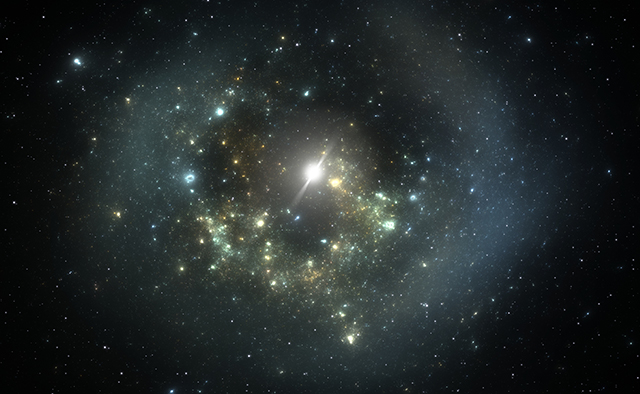
Earth was pummeled by three separate series of intense gamma-ray flares in the last 40 years. While scientists agree that magnetars, a type of neutron star, were behind the flares, the mechanism that unleashed those waves of energy remains unknown. A recent study offers a compelling theory to what that mechanism is.
Researchers from the University of Valencia and the University of Alicante in Spain came up with equations of a magnetar's magnetic field. They found that magnetic field instabilities, though they eventually correct themselves, can cause a magnetar's crust to crack open, sending waves of energy into space.
"Our results show that for typical magnetar field strengths...the instability is likely to break a large fraction of the crust down to the inner crust," wrote the researchers.
The findings of the study were published in the Monthly Notices of the Royal Astronomical Society.
Magnetars crack open
Giant gamma-ray flares were detected by scientists in 1979, 1998 and 2004. These flares didn't pose any danger and lasted only about one-tenth of a second. But they were greatly out of proportion to the usual gamma-ray beams that typically ripple through the universe.
The 2004 flare, for example, released as much energy as the Sun produces in 250,000 years. Although the radiation was not strong enough to disable any instruments, about 15 satellites and space equipment were bombarded by gamma rays and X-rays. The flare also generated a fireball that was detected by radio telescopes. Astronomers observed that the fireball blasted into space at 30 percent of the speed of light.
Scientists narrowed down the possible sources of the flares and stumbled upon magnetars, neutron stars wrapped in one of the strongest magnetic fields in the universe.
For the study, the researchers looked at the equations governing such a magnetic field. They contended that while the magnetic field of a magnetar is fairly stable, there's a branch of solutions to the equations that suggest a magnetic field sometimes go through periods of instability.
According to the researchers, an unstable field is self-correcting; it moves around until it finds a new, stable configuration. This process releases 30 percent of the total magnetic field energy across the rigid crust of a magnetar. Energy travels in the form of waves that are tall enough to span from the south shore of Long Island to Connecticut. In turn, the waves induce powerful mechanical stress on the crust, cracking it open much like a strong earthquake.
"For the largest magnetic fields the stresses induced in the crust are sufficient to shatter the entire crust," wrote the authors, adding that the three magnetars that generated the flares had unusually large magnetic fields.
The team said that when the crust of magnetars cracks open, a giant fireball blasts out at a significant fraction of the speed of light. Therefore, it takes no more than a second before enormous waves of energy reach Earth. (Related: Astronomers: Dead star sent massive X-ray, radio waves to Earth.)
Starquakes: Magnetars shake like a bell
In two of the three flares, astronomers detected signals that indicated a starquake, an earthquake-like phenomenon that mostly occurs on magnetars. Starquakes can cause magnetars to oscillate "like a bell," as the crust and the core, bound by an intense magnetic field, vibrate together.
Starquakes can occur due to a fracture in the crust or a sudden reorganization of the magnetic field. A neutron star such as a magnetar has a solid crust locked to its magnetic field. Therefore, a disruption in one area can immediately trigger a disruption in another area, causing vibrations all over the small but superdense star. On the other hand, a reshuffling magnetic field may crack the surface, trigger a chain of events that leads to a massive starquake.
In both cases, stored energy gets released through powerful bursts that shake the crust, which gets imprinted on gamma-ray and X-ray signals emitted by the bursts.
Scientists suspect that magnetars that emit giant flares could be experiencing a magnitude 23 starquake.
Cosmic.news has more studies and stories on cool stellar processes.
Sources include:
Please contact us for more information.



















